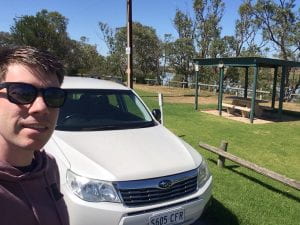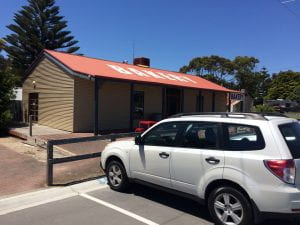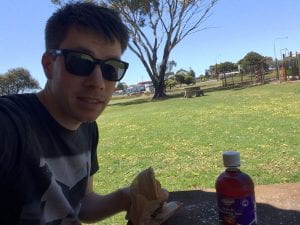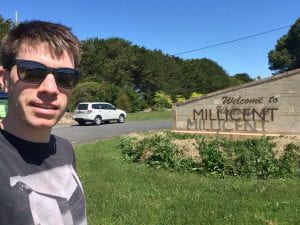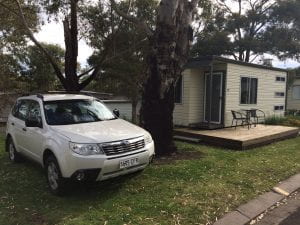Think about your learning journey so far in this subject. What have you learned? Has the journey been exciting? Is it harder to excite/engage students in learning when working wholly online?
This subject began in an area of great personal interest – physical library spaces. I have explored this topic in a previous subject, so was able to build upon my knowledge. Through the first assignment, I was also able to put this knowledge into practice, using the principles of twenty-first century library design to consider how to enhance my own school library. In particular, I like the idea of creating zones in the physical space, such as Thornburg’s campfire, cave, watering hole, and life (Oddone, n.d.), to ensure that the needs of the whole school community are being met.
But it was the next section that was new and perhaps more helpful to me – virtual library spaces. My school library does not have a strong virtual presence so it was interesting to explore ways to improve this, applying Thornburg’s spaces to a virtual sphere.
From there we explored the provision of different types of reference materials, website readability and evaluation, selection criteria for digital resources, and the print versus digital debate (the last of which, I must say, is enormously boring, especially reading through statistics comparing the two formats and coming to the same conclusions every single time). We have also considered how search engines work, using search strategies, and Web 2.0 tools. For some reason, I found the history of the internet to be very interesting – I look to the future with keen interest! And the Padagogy Wheel (Wilson, 2020) and SAMR models (Costello, n.d.) will both come in handy for planning.
Has the journey been exciting? Initially, it was, but right now I feel so bogged down with work, study and life that it’s hard to get excited about anything! I don’t think it is harder for me to engage in learning online because I am so used to it and I am happy to dive into it. But for many others I am sure that face-to-face learning is preferred. Indeed, when I was taking digital reading sessions in April, I found that face-to-face learning offers so many more learning opportunities, chances to ask questions and confirm understandings.
How could flipped learning influence program design and delivery for the classroom and library research investigations?
Flipped learning is not something that has crossed my radar before now as I have worked in schools in very low socio-economic areas where access to technology at home is minimal. Here, flipped learning is simply out of the question.
At my current school, however, this is certainly something to consider. I have seen firsthand the amazing learning that can take place during 1 to 1 time with a student. A benefit of flipped learning is that it frees up the teacher from ‘teaching’ content and allows them to work with students individually (Teachings in Education, 2017). For the TL, who may have fewer minutes with classes than a classroom teacher, this could allow them to work more closely with students on a face-to-face level. I mentioned this above, and research has shown that some students do prefer learning with a teacher present (Earp, 2016).
Clearly, flipped learning is not something that can be implemented overnight. You need your colleagues to be in on it. You need to curate resources and prepare the content for home learning so that it is suitable for each student. You might need some training in the relevant digital tools for implementation, and you need to invest time into setting flipped learning boundaries and expectations (Teachings in Education, 2017).
Now that we’ve been forced to prepare more online content, due to COVID 19, maybe planning time will be reduced, though, because we have the content made up already. Hmmm … I think flipped learning could be great, as long as it is well planned and considered. It would be important to evaluate the process with students. After all, they should always be the focus of any teaching and learning.
References
Costello, C. (n.d.). Using ICT and web tools in the classroom. Virtual Library. https://www.virtuallibrary.info/using-ict-and-web-tools.html
Earp, J. (2016, February 3). Homework culture key to flipped learning success. Teacher. https://www.teachermagazine.com.au/articles/homework-culture-key-to-flipped-learning-success
Oddone, K. (n.d.). Re-imagining learning spaces to inspire contemporary learning – part one: Models for change. Living Learning. https://www.linkinglearning.com.au/re-imagining-learning-spaces-to-inspire-contemporary-learning-part-one-models-for-change/
Teachings in Education. (2017, June 20). Flipped classroom model: Why, how and overview [Video]. YouTube. https://youtu.be/BCIxikOq73Q
Wilson, A. (2020, June 26). Tooltime taster: Select the right tool with the padagogy wheel. UTS. https://lx.uts.edu.au/blog/2020/06/26/tooltime-taster-padagogy-wheel/

